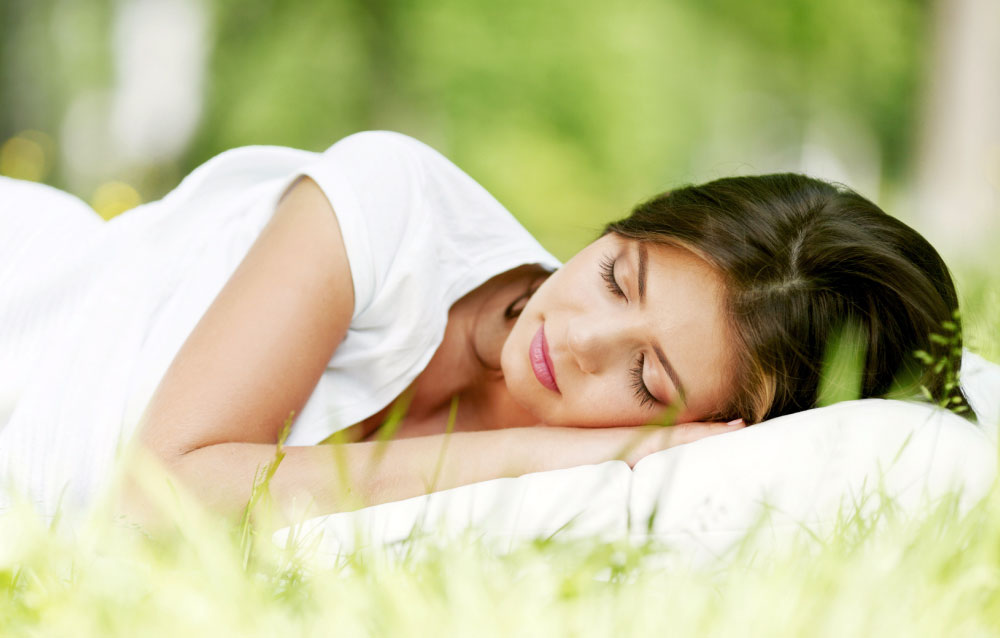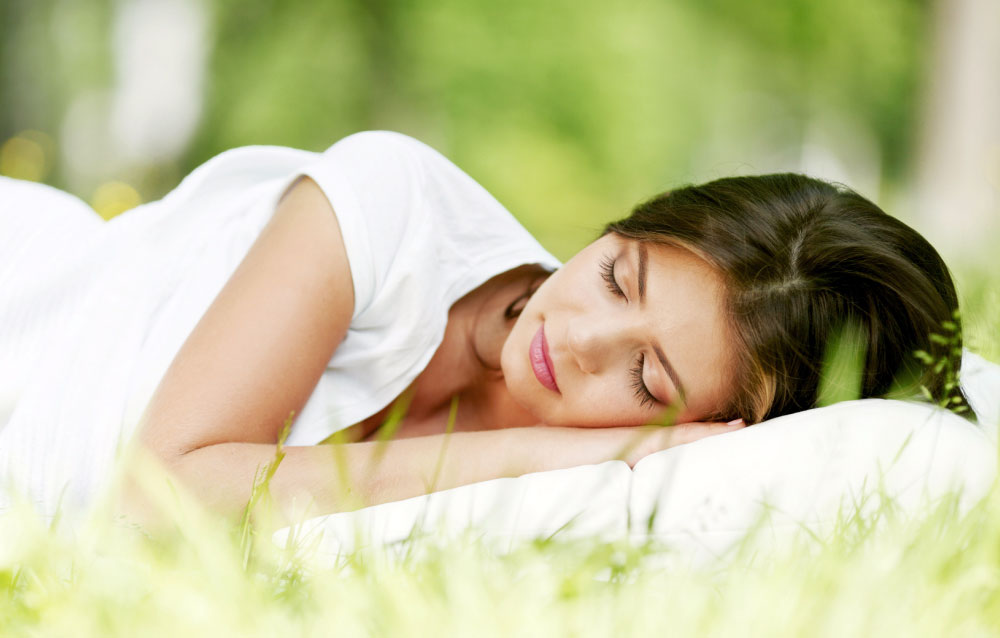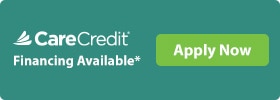Sleep Tips
There’s a lot you can do to help yourself get a good night’s rest.
There’s a lot we can do as well…
 Avoid caffeine, alcohol and sedatives: sedative medications will relax the tissues in the throat, making one more likely to snore as well as making the sleep apnea worse.
Avoid caffeine, alcohol and sedatives: sedative medications will relax the tissues in the throat, making one more likely to snore as well as making the sleep apnea worse.
 Do not sleep on your back: gravity will pull the soft tissues in the mouth towards the back of the throat making snoring and sleep apnea worse. Sleeping on your side will help decrease this problem. Taping or sewing a tennis ball or rolled ball of socks to one’s back or pajamas will act as a gentle reminder to avoid sleeping on the back.
Do not sleep on your back: gravity will pull the soft tissues in the mouth towards the back of the throat making snoring and sleep apnea worse. Sleeping on your side will help decrease this problem. Taping or sewing a tennis ball or rolled ball of socks to one’s back or pajamas will act as a gentle reminder to avoid sleeping on the back.
 Lose weight: extra weight will add to the bulk of the tissues in the neck and throat. This will increase the floppiness of the tissues and add to the risk of airway obstruction.
Lose weight: extra weight will add to the bulk of the tissues in the neck and throat. This will increase the floppiness of the tissues and add to the risk of airway obstruction.
 Improve nasal breathing: nasal obstruction will accentuate the symptoms of snoring and sleep apnea. Proper diagnosis and treatment of the nasal condition will greatly improve the sleeping situation.
Improve nasal breathing: nasal obstruction will accentuate the symptoms of snoring and sleep apnea. Proper diagnosis and treatment of the nasal condition will greatly improve the sleeping situation.
Pediatric Snoring & Sleep Apnea
The most common cause is enlargement of the tonsils and adenoids.
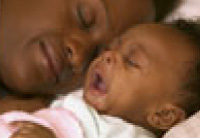 Children who experience difficulty breathing while sleeping may have a serious medical condition. Snorting, gasping or irregular pauses associated with snoring may indicate obstructive sleep apnea. Sleeping troubles in children are connected with poor school performance and behavioral problems as well as irritability, increased aggressiveness, attention deficit hyperactivity disorder (ADHD), age-inappropriate bedwetting and morning headaches. It is not uncommon for some children to be misdiagnosed with ADHD when they actually suffer from obstructive sleep apnea. Sleep testing is the only way accurately to diagnose whether the child is suffering from primary snoring or obstructive sleep apnea. The most common reason for sleep apnea and snoring in children is enlargement of the tonsils and adenoids. These tissues in the back of the throat and nose respectively can enlarge and mechanically block the airway. Our physician will use a special mirror, endoscope or x-ray to visualize the adenoids.
Children who experience difficulty breathing while sleeping may have a serious medical condition. Snorting, gasping or irregular pauses associated with snoring may indicate obstructive sleep apnea. Sleeping troubles in children are connected with poor school performance and behavioral problems as well as irritability, increased aggressiveness, attention deficit hyperactivity disorder (ADHD), age-inappropriate bedwetting and morning headaches. It is not uncommon for some children to be misdiagnosed with ADHD when they actually suffer from obstructive sleep apnea. Sleep testing is the only way accurately to diagnose whether the child is suffering from primary snoring or obstructive sleep apnea. The most common reason for sleep apnea and snoring in children is enlargement of the tonsils and adenoids. These tissues in the back of the throat and nose respectively can enlarge and mechanically block the airway. Our physician will use a special mirror, endoscope or x-ray to visualize the adenoids.
A surgical procedure called an adenotonsillectomy can be performed to remove both the tonsils and adenoids. This procedure is performed under general anesthesia on an outpatient basis. The discomfort with this procedure has been greatly reduced when surgeons use a radiofrequency probe called a coblator. This device removes the tonsil and adenoid tissue and stops any bleeding with minimal heat and temperature changes. Numerous studies have shown that removing the tonsils and adenoids does not further increase any risk of infection (as was once believed in the 19th century). The procedure has some risks, but these are rare and usually readily treatable. Although surgery may stop the child’s snoring, sleep apnea may persist. A post-operative sleep study would be required to ensure that the child is symptom free. For those children with persistent sleep apnea, nasal continuous positive airway pressure (CPAP) can be used quite effectively, even in the very young. If obesity is responsible for a child’s sleep apnea, then lifestyle and dietary changes are essential to control and reduce both the child’s and future adult’s sleep risk profile.
Insomnia
It can cause daytime fatigue, memory and concentration trouble, as well as poor work performance.
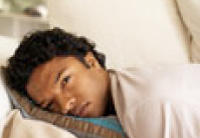 Insomnia is the term used to describe trouble either falling or staying asleep. Approximately 33 percent of all adults suffer from this disorder at some time in their lives. Daytime fatigue, memory and concentration trouble as well as poor work performance can result. Transient insomnia lasts less than four weeks and is usually triggered by a stress or illness. Short-term insomnia lasts between 4 weeks and 6 months and usually resolves after the ongoing life stressor resolves or diminishes. Chronic insomnia lasting more than 6 months affects more than 20 million Americans. Gastroesophageal reflux disease can cause frequent night time awakenings and contribute to insomnia.
Insomnia is the term used to describe trouble either falling or staying asleep. Approximately 33 percent of all adults suffer from this disorder at some time in their lives. Daytime fatigue, memory and concentration trouble as well as poor work performance can result. Transient insomnia lasts less than four weeks and is usually triggered by a stress or illness. Short-term insomnia lasts between 4 weeks and 6 months and usually resolves after the ongoing life stressor resolves or diminishes. Chronic insomnia lasting more than 6 months affects more than 20 million Americans. Gastroesophageal reflux disease can cause frequent night time awakenings and contribute to insomnia.
First and foremost, the proper treatment of insomnia requires avoidance of all stimulants and depressants, including caffeine, alcohol, over-the-counter cold medications and sleeping pills. Good sleep hygiene with nap avoidance and noise and light reduction are also quite helpful. Periodic leg movement disorder can often masquerade as insomnia. Treating the underlying movement disorder is often curative for the problem. Psychiatric problems responsible for many cases of insomnia are best dealt with by a psychiatrist/psychologist through multimodality therapy including psychotherapy, cognitive behavioral therapy and medication. Physical conditions contributing to sleeping difficulties should be managed and treated.
Restless Leg Syndrome
Most people with movement disorders are unaware that they are sufferring from them.
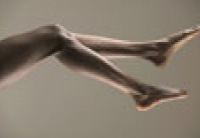 Restless Leg Syndrome (RLS) is a very common problem affecting up to 15 percent of people at some time in their lives. Even though older people are more likely to suffer from the problem, it is still very common in children. Most people describe an uncomfortable feeling in their calves that is usually worse in the evening or at bedtime. People with this problem are often unable to sit still for long periods of time and have trouble travelling long distances in a car or plane. Often these symptoms are troublesome enough to interfere with sleeping, and insomnia can occur from the constant need to move and stretch one’s legs. Periodic limb movement disorder (PLMD) is a variant of RLS, otherwise known as nocturnal myoclonus. This disorder usually manifests with toe and ankle movements in a “jerking” or “kicking” fashion. A person must have at least 4 abnormal motions in a row occurring at least 5 times an hour to be diagnosed with nocturnal myoclonus; twenty percent of people diagnosed with insomnia suffer from PLMD. While thirty percent of cases are known to have a hereditary cause, other reasons for the disorder include anemia, circulatory problems, neural and spinal problems, kidney disorders, alcoholism and vitamin and mineral deficiencies. Medications, smoking, caffeine or temperature extremes may also predispose some people to PLMD. Most people with movement disorders are unaware that they are suffering from them and need a bedpartner and /or a sleep study to help make the diagnosis. After repeatedly being awakened and kicked, bed-partners are often the ones to make the initial observation Polysomnography, or sleep testing, is the route most commonly used to diagnose people with suspected night time movement disorders.
Restless Leg Syndrome (RLS) is a very common problem affecting up to 15 percent of people at some time in their lives. Even though older people are more likely to suffer from the problem, it is still very common in children. Most people describe an uncomfortable feeling in their calves that is usually worse in the evening or at bedtime. People with this problem are often unable to sit still for long periods of time and have trouble travelling long distances in a car or plane. Often these symptoms are troublesome enough to interfere with sleeping, and insomnia can occur from the constant need to move and stretch one’s legs. Periodic limb movement disorder (PLMD) is a variant of RLS, otherwise known as nocturnal myoclonus. This disorder usually manifests with toe and ankle movements in a “jerking” or “kicking” fashion. A person must have at least 4 abnormal motions in a row occurring at least 5 times an hour to be diagnosed with nocturnal myoclonus; twenty percent of people diagnosed with insomnia suffer from PLMD. While thirty percent of cases are known to have a hereditary cause, other reasons for the disorder include anemia, circulatory problems, neural and spinal problems, kidney disorders, alcoholism and vitamin and mineral deficiencies. Medications, smoking, caffeine or temperature extremes may also predispose some people to PLMD. Most people with movement disorders are unaware that they are suffering from them and need a bedpartner and /or a sleep study to help make the diagnosis. After repeatedly being awakened and kicked, bed-partners are often the ones to make the initial observation Polysomnography, or sleep testing, is the route most commonly used to diagnose people with suspected night time movement disorders.
Many times no treatment is required to treat restless leg syndrome. Patients who are asymptomatic and without major sleep changes often do not need treatment. Some people are helped with conservative measures such as warm baths, leg massage, heat, ice packs, pain relievers, exercise, caffeine and tobacco avoidance as well as calcium and magnesium supplements. A number of medications can be utilized to treat this problem if it is not able to be controlled in a less invasive fashion. Medications such as Sinemet, Permax, Mirapex, Requip, Klonopin, Restoril, Valium, Neurontin, Tegretol, Clonidine and narcotics have all been used with success in the treatment of restless leg syndrome and periodic limb movement disorder. Certain medications that may worsen the situation include antihistamines, Compazine, Reglan, Dramamine, Bonine, Lithium, verapamil, diltiazem, nifedipine, Haldol, Thorazine and Mellaril. A repeat sleep study is often needed to assess the effectiveness of the treatment.

